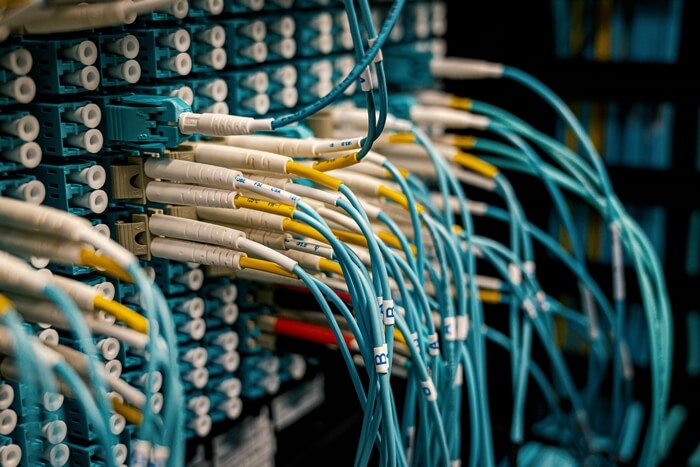Broadband vs Fiber
November 23, 2023

When it comes to high-speed internet, the terms “broadband” and “fiber” are often used interchangeably, yet they represent distinct concepts and technologies. Understanding the differences between these two can help consumers make informed decisions about their internet service.
Broadband – A General Category
Broadband is a wide bandwidth data transmission that transmits multiple signals and traffic types. The Federal Communications Commission (FCC) defines broadband as a minimum download speed of 25 Mbps and a minimum upload speed of 3 Mbps. It encompasses several high-speed transmission technologies such as:
- Digital Subscriber Line (DSL)
- Cable Modem
- Fiber
- Wireless
- Satellite
- Broadband over Powerlines (BPL)
Key Characteristics of Broadband:
- Versatility: Supports a wide range of frequencies and can carry multiple signals by dividing the total capacity into multiple, independent bandwidth channels.
- Accessibility: Generally available and can be accessed using various technologies.
- Speed Variability: Depending on the type of technology used, speeds can vary from just above dial-up to gigabit speeds.
Fiber Internet
Fiber-optic internet, commonly referred to as “fiber”, is a type of broadband that uses glass or plastic threads (fibers) to transmit data. It boasts much higher speeds than traditional copper cables used in standard broadband connections.
Advantages of Fiber
- Speed: Offers gigabit speeds that can far exceed the capabilities of other forms of broadband.
- Reliability: Less prone to interference and signal degradation over long distances.
- Bandwidth: Higher capacity for bandwidth compared to copper cables.
Side-by-Side Comparison
Let’s break down how fiber stacks up against other broadband technologies:
| Aspect | Broadband (Non-Fiber) | Fiber-Optic |
|---|---|---|
| Medium | Copper cable, satellite | Glass or plastic fibers |
| Speed | Ranges from below 100 Mbps to 1 Gbps | Usually offers 1 Gbps and can reach up to 2 Gbps or more |
| Latency | Higher due to medium and distance | Lower due to the speed of light transmission |
| Bandwidth | Limited by medium | Higher potential bandwidth |
| Interference | Susceptible to electromagnetic interference | Minimal interference |
| Installation | Widely available and often using existing infrastructure | May require new infrastructure but expanding rapidly |
Why Choose Fiber Over Other Broadband Options?
- Speed: Fiber’s gigabit speeds make it ideal for heavy internet users and large households.
- Future-Proof: As the internet of things (IoT) expands, fiber infrastructure is best suited to handle increased demands.
- Consistency: Fiber provides consistent speeds, even during peak usage times.
When is Traditional Broadband Preferable?
- Budget Constraints: If cost is a major factor, traditional broadband may be more affordable.
- Limited Usage: For users with minimal internet needs, the higher speeds of fiber may not be necessary.
- Availability: In areas where fiber is not yet available, traditional broadband can still provide sufficient speeds for most needs.
In the debate of broadband vs fiber, the choice ultimately depends on individual needs and available infrastructure. While fiber offers superior speed and reliability, it may not be necessary for everyone’s internet usage or available in all areas. Broadband, with its various delivery methods, still provides a necessary level of connectivity for many users. Consumers must weigh the pros and cons, considering factors like speed requirements, budget, and whether their internet consumption justifies the need for a fiber connection. As technology advances, the gap between broadband and fiber may lessen, but for now, fiber stands as the premium choice for high-speed internet.

